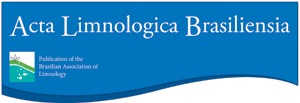Abstract:
Aim The goal of this study was to investigate the effect of habitat heterogeneity on diversity on a local and regional scale. We tested two hypotheses: (i) the habitat diversity, given by quantity of microhabitat by macrophytes richness, increases the alpha diversity of organisms that live in those environments; (ii) the habitat heterogeneity, given by compositional difference of microhabitat, increases the beta diversity of organisms that live in those environments.
Methods Samples contained cladocerans and macrophytes were collected in six wetlands from the Brazil Central during dry and rainy seasons, in Brazilian National Park (BNP) and Formosa Instruction Field (FIF).
Results In local scale (wetlands) the number of macrophyte morphospecies shows the positive effect on alpha diversity of cladoceran; the compositional difference of the microhabitat positively affected the beta diversity in three wetlands studied. In regional scale, the number of macrophyte morphospecies showed the positive effect on alpha diversity; the beta diversity was higher in the BNP than in the FIF.
Conclusions Our findings suggest that the species richness and dissimilarity of aquatic macrophytes increased to alpha and beta diversity of cladocerans on the local and regional scales. Thus, cladocerans richness was correlated with the number of microhabitats and the variability between microhabitats in wetlands.
Keywords:
Chydoridae; microcrustaceans; microhabitats; wetlands

 Environmental heterogeneity in wetlands increases alpha and beta diversity of cladocerans (Crustacea, Branchiopoda) at local and regional scale
Environmental heterogeneity in wetlands increases alpha and beta diversity of cladocerans (Crustacea, Branchiopoda) at local and regional scale Thumbnail
Thumbnail
 Thumbnail
Thumbnail
 Thumbnail
Thumbnail
 Thumbnail
Thumbnail



